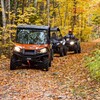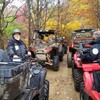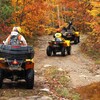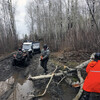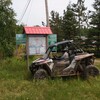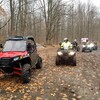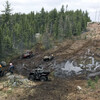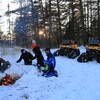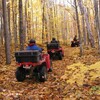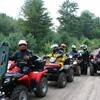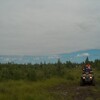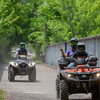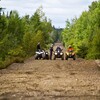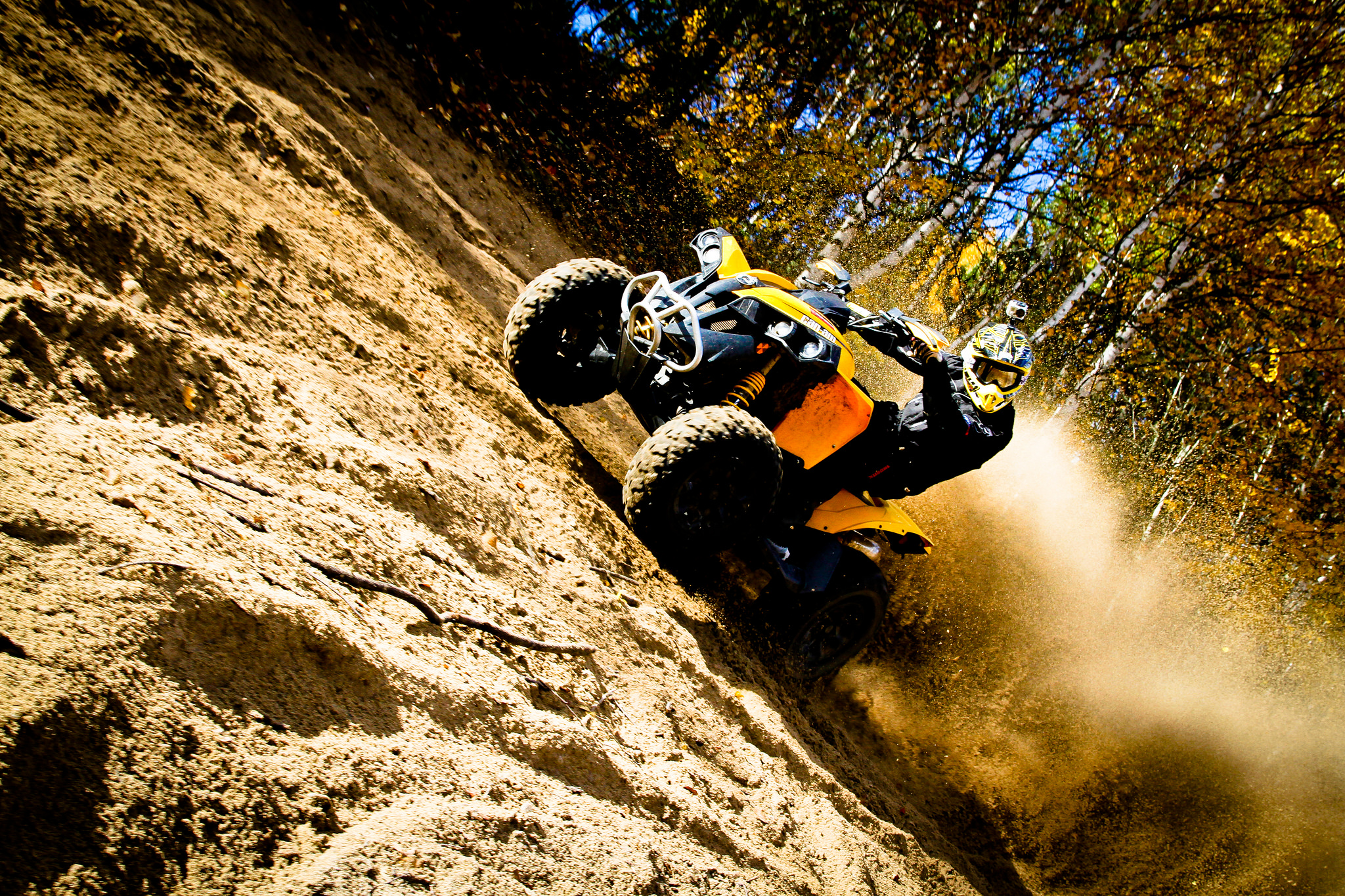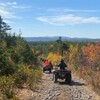
Don't get stuck in the mud!
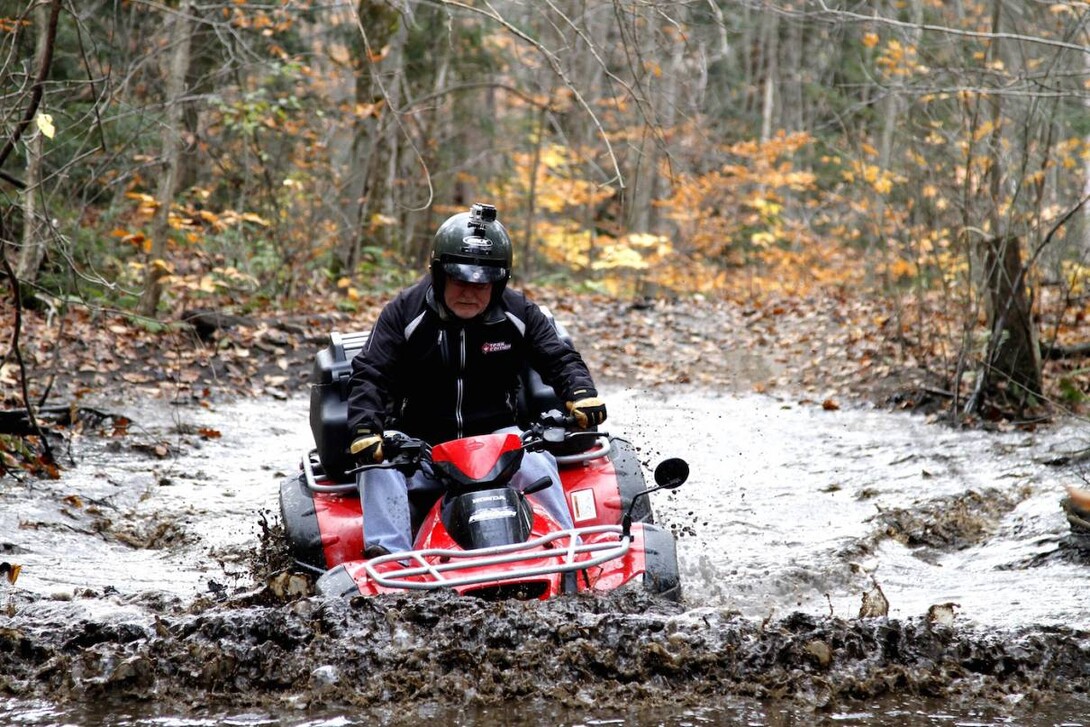
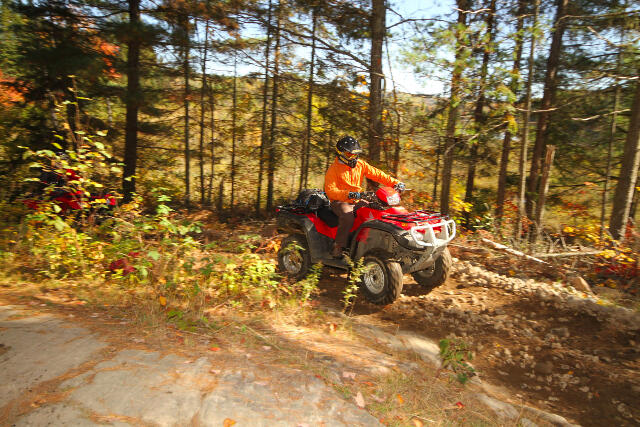
When out riding an ATV, there is always a risk of getting stuck. It kind of comes with the territory, and knowing how to get out using the good ol’ winch is the trick to making the fun last.
First of all, nobody should ever ride alone. And once stuck, make sure to get out of the way before anybody else tries their luck. There's no point in being two on the trail when both of you are stuck. Secondly, if there’s a risk of getting stuck, make sure to plan a way out before going in. Look where there are safe points to anchor the winch with a tow strap, with relative straight pulls out and close enough to reach. Trying to pull toward points that are not reasonable right in front of the ATV will often result in a broken winch cable and danger to the people around while pulling.
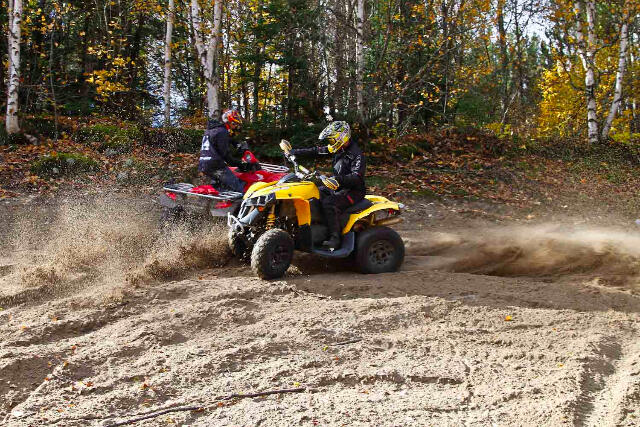
So, what should you pack?
Have a pair of heavy-duty gloves with you. Personally, I always ride with a pair of all-leather work gloves. A winch cable can be rough on your hands, and gloves are always good for protection.
Another thing that I often see forgotten is to pack at least one tow strap. Tow straps are great to protect any tree that you might need to hook up to, but a winch cable is also not built for towing. When using a winch to pull somebody out of a bad spot, I’ve seen many times people notching to get enough momentum to get the person unstuck. During towing operations, the cable constantly gets a bit of slack, only to snap tight again. This type of operation likely far exceeds the capacity of just about any winch, resulting in broken gears, cable or worse. Tow straps also get you a little extra length if the closest anchor point is just outside the reach of the winch cable. I always try to pack a 20-foot heavy-duty strap for towing with added length, and a short 8-footer just in case.
When winching, there is always a risk of the cable breaking. When that happens, it can sometimes come back and hit anybody standing around. This can happen because cables often are slightly elastic and store a lot of energy from the pull. Good rules are to only have the winch operator around, and make sure as a minimum to keep your eye protection on, but even better, leave on your helmet. The new synthetic cables typically store less energy, but can still come back at anybody standing around. It’s far better to be safe, than sorry.
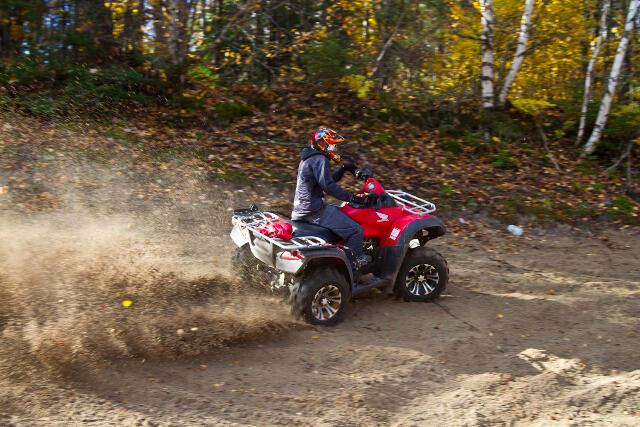
Tricks of the trade
There’s also a great trick that I think many should know about. If you take a jacket and hang it over the winch cable in the middle during the pull, it will absorb much of the energy stored in the cable and reduce the risk of the cable coming back to hit anybody should it break.
When stuck in deep mud, try if possible to attach the winch cable so it is pulling the ATV slightly up and out of the mud, instead of doing a straight, flat pull that just pushes the mud in front of the machine (in the process, filling the last few holes in the rad). It makes for lighter work for the winch, and there’s less chance of overheating due to a clogged radiator later. During the years, I’ve seen many people staying on their ATV instead of getting off of it. The pull is far lighter for the winch when 150 pounds or more pushing it down in the mud are not added on top. It also reduces the risk of getting hit by the winch cable should it snap—both because of the reduced weight, and because nobody is sitting in the direct line of the cable.
If you are pulling your ATV up a steep hill because that is the only way forward, please remember to make sure that nobody is standing in the path of the ATV should the cable give in. This is not a very common pull, so often people forget that the cable can snap, leaving 600 pounds of ATV in full-speed downhill. Make sure that everybody is away from the path that it would, or could, take if that happens.
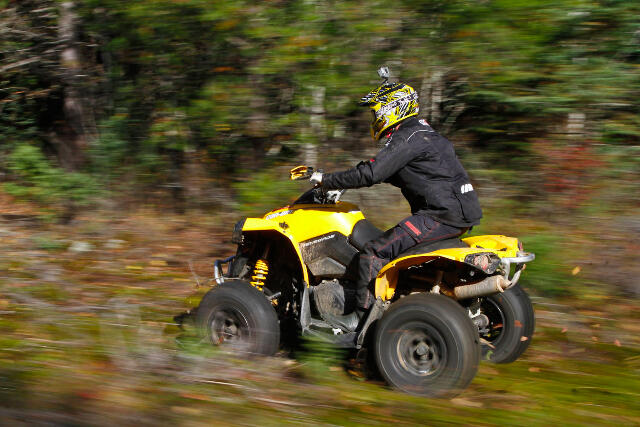
Have fun out there and remember, safety first!
Recommended Articles
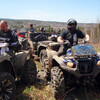
The Complete 2025 List of ATV Events in Ontario
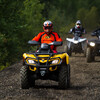
Guided ATV Tours
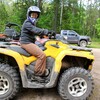
Confessions of a First Time ATV Rider: Mattawa Voyageur Multi Use Trails
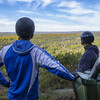
6 Reasons Why Mattawa is Canada's Off Road Capital
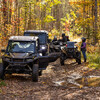
ATV Riding the Ottawa Valley: A 2-Day Itinerary
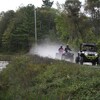
18 Best ATV Cabin Rentals
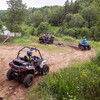
Never Get Lost Again
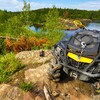
As If Anyone Needed Convincing
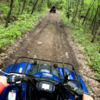
5 Things I Learned ATVing For the First Time
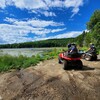
Ontario’s North Country ATV Trout Tour

Vintage ATVs: A Guide to Your Favourite Rides

